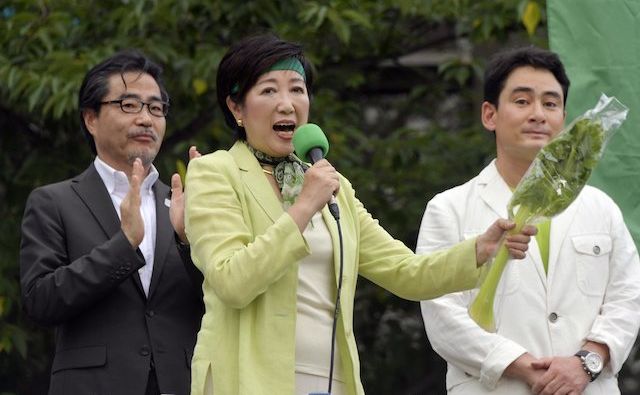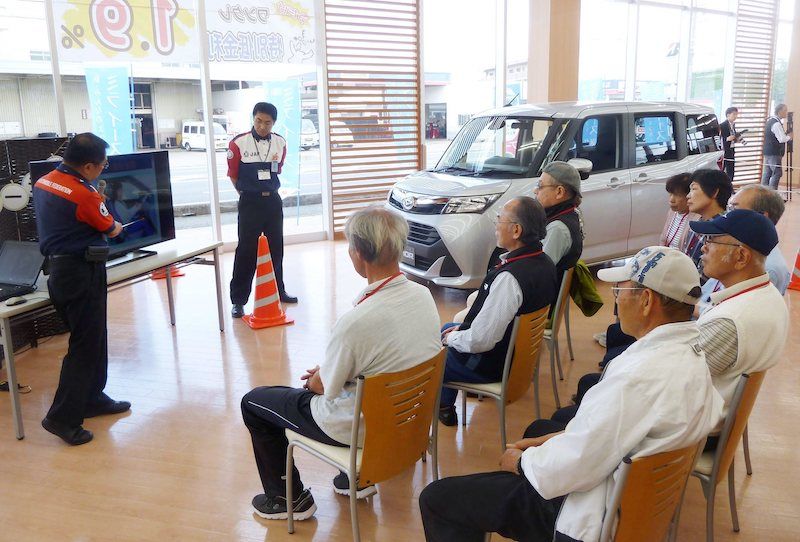Japan needs woman power
Gender equality is not one of greatest strengths of Japan, but the rapid shrinking and aging of the population have started to exert pressure on a society whose culture is drawn from the samurai era. These values practically exclude young mothers from the workforce and set a very low glass ceiling for professional women.

In a nutshell
- Japan’s conservative culture discourages women from combining children and careers
- As the country’s demographic trend worsens, more women’s participation in the labor force is essential
- While traditionalist ruling elites have ignored this solution, societal change seems inevitable
Japan’s population is shrinking and aging rapidly. Its demographic projections for coming decades are getting ever more pessimistic with some forecasts predicting that the country’s population, which currently stands at some 127 million, will shrink to 83 million by 2100.
While such long-term prognostication is inherently uncertain, one thing is already apparent: Japan is suffering from a demographic crisis that strains the existing social security system, damages its labor market and impairs its industrial competitiveness. In the strategies to address these complex challenges, schemes for empowering Japanese women and incorporating them into the economy will be of pivotal importance.
Equality problem
It is broadly accepted in the Western world that women should assume more leadership positions in politics, society, banking and industry. Few dispute the view that enhanced female participation in the highest levels of decision-making is good for everyone. The need for this may seem particularly acute in Japan, where women are scarce in senior government posts and rarely appear on the higher rungs of the corporate ladder. And forget about finding females as CEOs in large Japanese companies.
At first sight, Japan looks a horrible place for women whose life aspirations go beyond raising a family. When it comes to career opportunities, the outlook for Japanese women is quite abysmal. A recent evaluation by the World Economic Forum ranks Japan 114th among 144 countries when it comes to gender equality. This in a country that features the third largest economy in the world and ranks among the top in terms of technological and scientific accomplishments.
Japanese women have the highest life expectancy in the world, far ahead of the United States.
Before concluding that Japanese women have it worse than their sisters in many developing countries, one must consider the complex socioeconomic reality. In terms of education, Japanese girls are kept to the same exacting standards as Japanese boys. In institutions of higher learning, women are as well represented as in other OECD countries. Furthermore, general living conditions for women in Japan are good and in many aspects among the best in the world. This is reflected, for example, in physical security: even in big cities, there are no-go areas where women must fear physical assault. In terms of social mobility, Japanese women, particularly of the younger generations, enjoy the same freedoms as in other highly advanced societies.
Finally, Japanese women have the highest life expectancy in the world, far ahead of the United States.
The samurai culture
What then is wrong with Japan? In short, it is the pernicious survival of samurai culture, a leftover of Japan’s feudal society where men were warriors and women stayed home tending the fields and the children while their husbands were fighting endless wars. Today, the war is not fought with weapons. Former warriors have turned into salarymen, the daimyos (dukes) and samurais into corporate executives, bureaucrats and politicians.
It is more than symbolic that in his latest government reshuffle, Prime Minister Shinzo Abe – who is supposed to have understood that women must play a more prominent role in Japanese society – appointed only one woman to his 24-member cabinet.
Of course, a few women have managed to rise in Japanese politics. There is no legal bar precluding women from office. Prominent examples include Makiko Tanaka, a former foreign minister, and Yuriko Koike, Tokyo’s current governor. These are strong-willed females who acquired their posts on merit, not as showpieces of gender equality. Nevertheless, when looking at Japan’s leading hopefuls for high political office, we do not see any women in the running.
Keidanren is Japan’s leading business federation. Bearing in mind the global strength of Japan’s big corporations, it must surely rank among the most powerful nongovernmental organizations in the world. Within the political and economic power structure of Japan Inc., Keidanren sits at the very center. It is significant that the core decision-making bodies within the federation are entirely male.
When some 15 years ago it appeared that there would be no male heir to the imperial throne, alarmed conservative monarchists fiercely opposed the prospect that the only daughter of Crown Prince Naruhito would step into the line of succession. Luckily, in 2006 the crown prince’s brother, Prince Akishino, fathered Prince Hisahito, the emperor’s only grandson; this made a potential female succession to the Chrysanthemum Throne a nonissue. It is ironic that all this fuss occurred in a country that claims its imperial family is descended from the sun goddess Amaterasu!
As Japan is set against allowing large-scale immigration, this low birth rate condemns the country to a labor shortage.
Mao Zedong, the chairman of the Communist Party of China (1943-1976), is considered the most bloodthirsty dictator in history, yet he can claim credit for one accomplishment that would resonate with today’s public opinion: the emancipation of Chinese women. Before the revolution, they had no rights and lived in abject conditions. It was Chairman Mao who declared that “women carry half of the sky” and must be liberated from the shackles of ancient ways. Of course, today’s China is still a long way from full representation of women in leading political and economic positions – in this respect, it more closely resembles India. And most certainly, the Japanese would not want to be compared with either of these two Asian giants.
‘Parasite single’
Demographically, Japan urgently needs to improve its fertility rate and increase female participation in the workforce at all skill levels. At the present rate of demographic development, Japanese society is virtually dying out. Its fertility rate (the number of children born per woman) stands at an alarmingly low 1.42, far below the level needed to keep the population stable. As the country is set against allowing large-scale immigration, this low birth rate, in effect since the 1990s, condemns Japan to a severe labor shortage.

While many business leaders are calling for more foreigners to be allowed to work in Japan, the core challenge remains persuading Japanese families to have more children. This implies first and foremost more marriages. In 1965, 1.5 percent of men and 2.5 percent of women remained unmarried at the age of 50. Today, these rates are 23 percent and 14 percent, respectively. Nearly two-thirds of women in the 25-29 age bracket are unmarried. And if they ever do marry, they are certainly not planning to have large families. Of the many reasons for this state of affairs, two are of particular concern.
Many young urban dwellers delay establishing their own households and continue to live with their parents long after finishing their education. Young women prefer work and a singles lifestyle to the drudgery of becoming a suburban homemaker. There is even a term, “parasite single” (in Japanese “parasaito shinguru”), to describe them, implying that they are selfish and do not contribute to society. Significantly, this epithet is mostly used against women, even if young Japanese males are also overstaying at “hotel mama.”
Lack of support
A second reason for not marrying and having children has to do with the financial, social and lifestyle changes that are usually associated with parenthood. Japan is singularly short of women on executive boards and in senior or even mid-level management positions. This is because it is particularly difficult in Japan for women to combine having a family and pursuing a professional career. Generally, when a Japanese woman leaves her job to start a family, there is little chance of her returning to the workforce within a few years.
Far too little support is given to working mothers to make such returns possible. Japanese culture stigmatizes a mother who is not at home when her child comes back from school. As a result, the country has remarkable deficits in providing preschool and daycare facilities for small children. Such options are either unavailable or too expensive for working mothers.
Child-rearing is a very costly undertaking in Japan and most middle-income families cannot afford to have two or more children. Prime Minister Abe talks a good game on the need to attract more women to the workforce, but government initiatives to remove social and institutional obstacles remain insufficient. The debate about the challenges posed by an aging and shrinking population has been going on for years in Japan, somewhat inconclusively. Only recently, business leaders have begun to sound the alarm over dangerous shortages on the labor market. As a result, a few short-term remedies are on the table.
The reformers must overcome entrenched social customs, ingrained prejudices and deeply-rooted traditions.
Because preparations for the 2020 Olympic Games in Tokyo have required a massive expansion in infrastructure, more foreign construction workers have been admitted for these specific projects. Other programs aim to get more foreign workers to priority sectors, such as information technology or health and geriatric care. Even in Japan’s ubiquitous convenience stores, one encounters more foreigners at the cash counters these days.
Scenarios
Japan will never become an immigrant society like the United States or Western Europe. To stop its demographic decline, this island nation will need to develop a bold strategy for enhancing its birth rate. That would undoubtedly require better conditions for working women – which would encompass a host of measures, ranging from the introduction of affordable daycare to tax relief for families. Offering greater professional opportunities for women would be even harder, since the reformers must overcome entrenched social customs, ingrained prejudices and traditions.
Shinzo Abe has just been reelected to another three-year term as leader of the ruling Liberal Democratic Party (LDP). At the latest, he must call elections to the lower house of the Japanese parliament by October 2021. This implies that he will lead the LDP into the next election – provided no health issues intervene in the meantime. Most recently, when Mr. Abe unveiled his new cabinet, LDP officials outlined what they considered to be the main policy issues – but nothing on the demographic challenge or the status of women. Mr. Abe appears to have lost his “determination” to improve conditions for working mothers and professional women. Instead, his government seems intent on clinging to policies serving the interests of the LDP’s traditional clientele.
The most likely prospect is that by 2021, Japan will still be facing the same set of demographic and social challenges, having wasted valuable time. No letup in labor shortages can be expected, which will only increase the demographic, economic and social pressures for radical reforms in the position of Japanese women.
With no credible policy in sight, skeptics can take heart from Japanese history, especially the feats of the Meiji Restoration and the country’s reconstruction after World War II. When push comes to shove, Japan’s conservative civilization has an uncanny ability to turn on the proverbial dime and push through profound and unprecedented reforms in a very short time.








